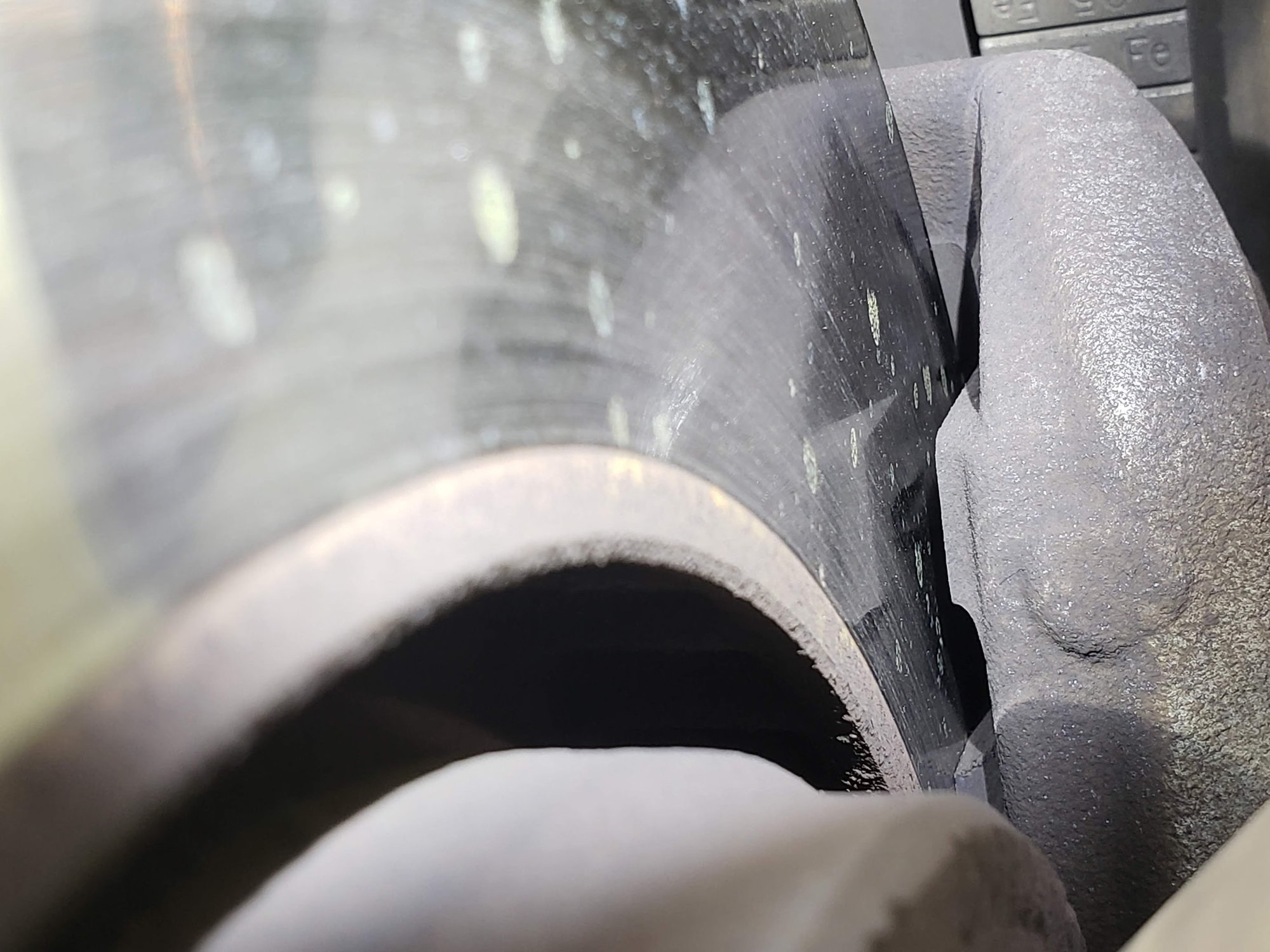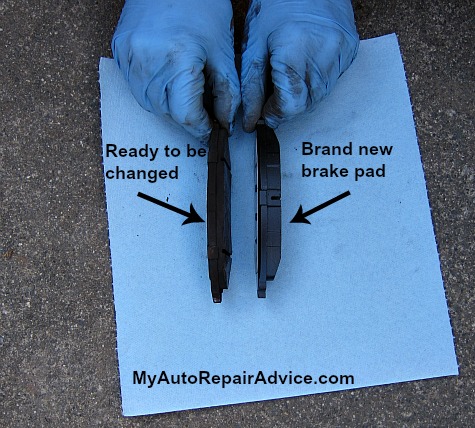How to Check Your Brake Pads Without Removing Wheel
To check your brake pads without removing the wheel, look through the spokes for visibility. Check the thickness and wear indicators to assess the condition.
Brake pads are a critical component of your car’s safety system, and regular inspection is essential to ensure they are in good condition. By following a few simple steps, you can easily check the brake pads without the need to remove the wheel.
This guide will provide you with the necessary information to assess the brake pads’ condition and determine if they need to be replaced. Taking the time to inspect your brake pads can help prevent potential accidents and ensure your vehicle’s optimal performance on the road.

Credit: www.supaquick.com
Why Checking Your Brake Pads Is Important
Ensuring the safety of you and your passengers is paramount, and proper maintenance of your vehicle’s brake pads plays a crucial role in this. Regularly inspecting your brake pads can help prevent accidents and ensure that your vehicle stops effectively when needed. Additionally, checking your brake pads can save you from costly repairs down the line. By monitoring the condition of your brake pads, you can identify any issues early on and address them before they escalate into more significant problems.
Ensuring Safety
Brake pads are essential components of your vehicle’s braking system. Regularly checking them helps ensure that your car can come to a safe and prompt stop when necessary, enhancing driving safety for you, your passengers, and others on the road.
Preventing Costly Repairs
Regular checks on your brake pads can help identify wear and tear early on. By addressing this promptly, you can prevent more extensive damage to your vehicle’s braking system, saving you from expensive repairs in the future. Additionally, knowing the condition of your brake pads allows you to plan and budget for replacements as needed, further preventing unexpected financial burdens.
Tools And Equipment You’ll Need
Having the right tools and equipment is crucial for checking your brake pads without removing the wheel. Make sure you have the following items ready before you start:
Flashlight
A flashlight is essential for illuminating the brake components and checking their condition. It helps you see into tight spaces and identify any potential issues with the brake pads.
Mirror
Using a mirror can provide a different angle and perspective when inspecting your brake pads without having to remove the wheel. This can help you spot any wear or damage that may be harder to see directly.
Step-by-step Guide To Checking Brake Pads Without Removing The Wheel
Step-by-Step Guide to Checking Brake Pads Without Removing the Wheel
Park The Vehicle On A Flat Surface
Ensure the vehicle is parked on a level surface before starting the inspection.
Locate The Brake Caliper
Identify the brake caliper behind the wheel that needs to be inspected.
Inspect The Brake Pads For Wear
Visually examine the brake pads to check for wear and tear.
Check For Uneven Wear On The Pads
Look for any uneven wearing patterns on the brake pads.
Look For Any Signs Of Damage
Inspect the pads for any visible signs of damage, such as cracks or deep grooves.

Credit: www.f150forum.com
Understanding Brake Pad Wear Indicators
Understanding brake pad wear indicators allows you to check your brake pads without removing the wheel. Simply look for the small metal tabs or grooves on the brake pads that serve as indicators, signaling when it’s time to replace them for optimal safety and performance.
Understanding Brake Pad Wear Indicators What are Brake Pad Wear Indicators? Brake pad wear indicators are a crucial component of your car’s braking system that serve as an early warning system for when your brake pads are worn down and in need of replacement. These indicators are small metal tabs or rivets attached to the brake pad which are designed to make contact with the rotor once the pad has worn down to a certain level. This contact results in a distinguishable squealing sound, alerting you that it’s time to replace your brake pads. Keeping an eye on these indicators can help you avoid the potential dangers of driving with worn brake pads. How to Identify Brake Pad Wear Indicators Identifying brake pad wear indicators can be done without removing the wheel, and it’s an essential skill for maintaining your vehicle’s safety. To locate the wear indicators, simply look through the caliper and between the spokes of the wheel to visually inspect the brake pads. If your vehicle is equipped with wear indicators, you should be able to spot them as small metal tabs or rivets that are easily visible without removing the wheel. Be sure to check both the inner and outer brake pads for wear indicators, as they can be present on either or both sets depending on the make and model of your vehicle. If you are unable to locate the wear indicators, refer to your vehicle’s manual for detailed instructions for your specific make and model. By understanding and identifying brake pad wear indicators, you can stay on top of your vehicle’s maintenance and ensure your safety on the road. Regularly checking these indicators will help you avoid unexpected brake failures and unnecessary damage to other components of your braking system.When To Replace Your Brake Pads
To check your brake pads without removing the wheel, listen for any unusual sounds when you apply the brakes. Look through the spokes of your wheel to visually inspect the thickness of the brake pad. If it’s less than a quarter of an inch thick, it’s time to replace them.
Regular upkeep ensures your safety on the road.
Introductory Paragraph
Knowing when to replace your brake pads is crucial for maintaining your vehicle’s safety and performance. Regularly checking the condition of your brake pads can help you detect any issues early on and prevent potential accidents. In this section, we will discuss two important indicators of worn-out brake pads: the thickness of the brake pad and squealing or grinding noises. By paying attention to these signs, you can ensure the optimal functioning of your brakes and keep yourself and others safe on the road.
Thickness Of The Brake Pad
The thickness of your brake pads plays a vital role in their functionality. Over time, brake pads wear down due to constant friction with the brake rotors. A healthy brake pad typically has a thickness of around 10-12 millimeters. However, as pads wear out, their thickness decreases. So, how can you check the thickness of your brake pads without removing the wheel?
One method is by using a brake pad wear indicator. This small metal tab is built into the brake pad itself, and when the pad reaches a certain thickness, the wear indicator starts making contact with the rotor. When you see or hear the wear indicator touching the rotor, it’s a clear sign that your brake pads are worn and need immediate replacement.
Another way to check the thickness is by visually inspecting the pad through the gaps in your wheel’s spokes. Look for any noticeable reduction in the pad’s thickness. If you can easily see the metal backing plate of the brake pad, it is a strong indication that the pads have worn down excessively and require replacement.
Squealing Or Grinding Noises
Squealing or grinding noises are often a tell-tale sign of brake pad deterioration. When you apply pressure to the brake pedal, the brake pads clamp down on the rotors, creating the necessary friction to slow down or stop your vehicle. However, as the brake pads wear down, the metal backing plate can come into contact with the rotor, resulting in unpleasant sounds.
If you notice a high-pitched squealing noise when you apply the brakes, it indicates that your brake pads have reached a critically low thickness. This noise is caused by the wear indicator previously mentioned, which is designed to alert you to the need for replacement.
On the other hand, if you hear a grinding or metallic scraping noise, it is a strong indication that the brake pads have completely worn down, and the metal backing plate is making direct contact with the rotor. At this point, immediate replacement is necessary, as driving in this condition can severely damage your brake system and compromise your safety.
Regularly listening and paying attention to these audible cues can help you stay on top of your brake pad condition, ensuring that you address any issues promptly and maintain optimal braking performance.

Credit: www.myautorepairadvice.com
Frequently Asked Questions For How To Check Your Brake Pads Without Removing Wheel
Can You Check Brakes Without Removing Wheel?
Yes, brakes can be checked without removing the wheel using a flashlight to inspect the brake pads and calipers for wear.
Can You Check Brake Pads With Tire On?
Yes, brake pads can be checked with the tire on by visually inspecting through the wheel spokes.
How Do You Visually Check Brake Pads?
To visually check brake pads, first, remove the wheel to access the brake assembly. Next, inspect the brake pads for thickness and any signs of wear or damage. Look for wear indicators, like grooves or notches, to gauge pad condition.
If they are less than 1/4 inch thick, they need replacing.
How Do You Tell If Brake Pads Are Bad Without Removing Them?
To check if brake pads are bad without removing them, inspect the thickness of the pads. Look for any signs of wear or damage, such as cracks or uneven surfaces. Listen for squeaking or grinding noises while braking. These indicators can suggest it’s time to replace the brake pads.
How Do You Check Brake Pads Without Removing The Wheel?
To check your brake pads without removing the wheel, you can visually inspect them through the spokes of the wheel.
What Are Signs Of Worn-out Brake Pads?
Worn-out brake pads may exhibit signs such as squeaking or grinding noises, reduced braking performance, or a pulsating brake pedal.
Can You Visually Inspect Brake Pads For Wear?
Yes, you can visually inspect brake pads for wear by looking through the wheel spokes and checking for thickness and signs of damage.
Conclusion
Regularly inspecting your brake pads is crucial for your safety on the road. By following the simple steps outlined in this guide, you can easily check your brake pads without removing the wheel, saving time and money in the long run.
Keeping your brakes in good condition ensures a smooth and safe driving experience.

